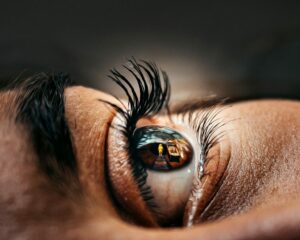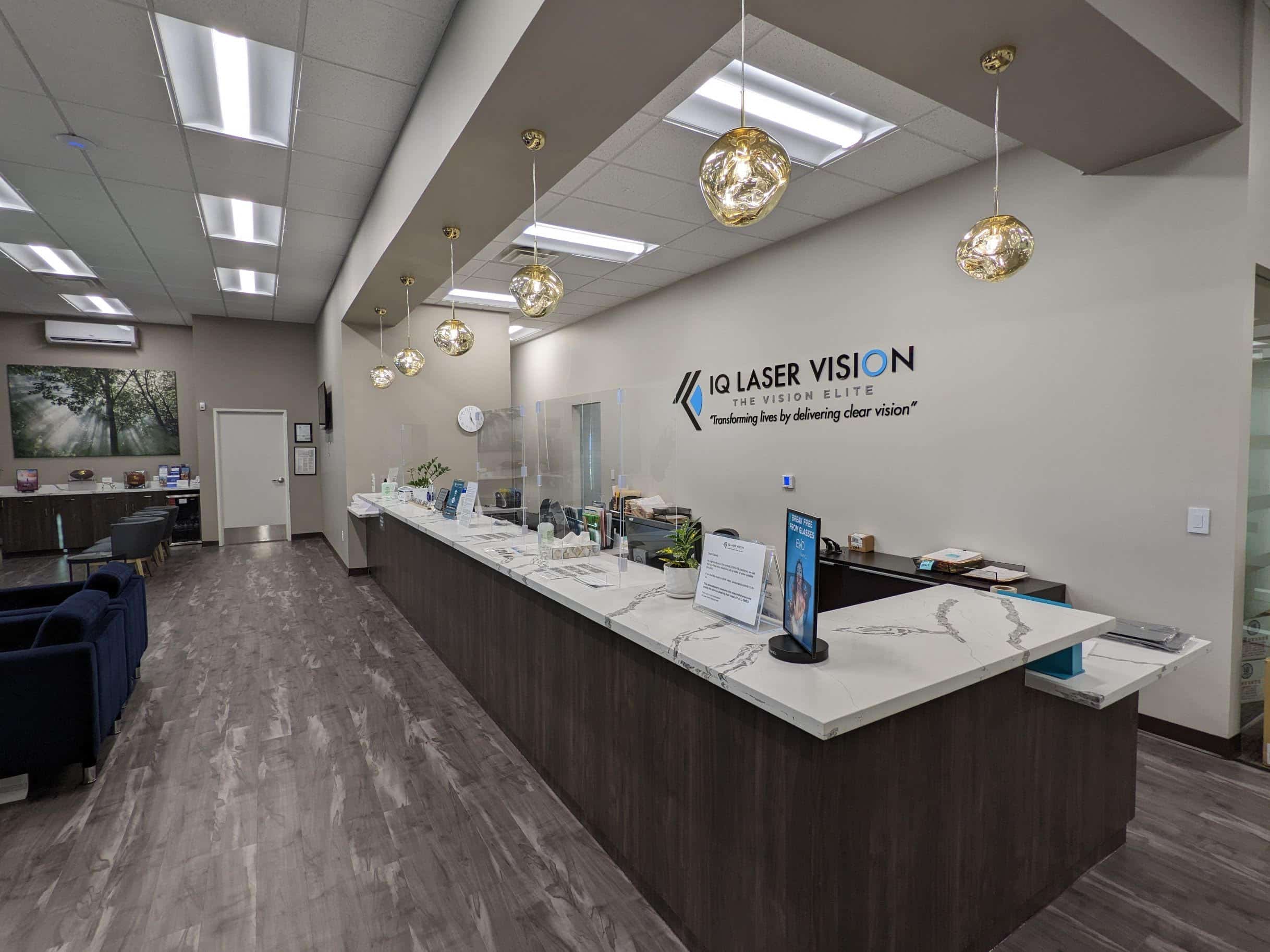
Eye drops can be very helpful to temporarily relieve and combat common eye conditions such as red or dry eyes—except when they’re not (but more on that shortly).
With more options appearing over the counter all the time (and don’t even get us started on all the prescription brands), it can be hard to determine which ones are best, and also right for your eyes’ needs. But we’re about to arm you with some vital information to help you sort through your options to get the relief you need.
Tears with a purpose
We’ll bet you didn’t know your tears actually serve a purpose—and a good one at that! Your tears provide a cleansing wash over your eyes every time you blink (at least they’re supposed to!), helping wash away contaminants, preventing irritation and relieving dryness and discomfort from the elements that can lead to dry eye.
What is dry eye?
Dry eye happens when your peepers aren’t producing enough moisture to lubricate and bathe themselves. You might experience the burning sensation of dry eyes when using the computer without blinking regularly, in windy or sunny weather or when taking certain types of medication. Contact lenses, some diseases, allergies, and pregnancy are also notorious culprits for causing dry eye.
Eye drops—a great temporary solution
Eye drops go by a variety of names, including eye lubricant, eyewash, eye moisture and more. They can stand in for your own natural eye moisture when it’s not being produced, reduce the moisture being produced, or just give your eyes a little TLC when they’re feeling under the weather and itchy from allergies or other conditions. For example, certain types of eye drops may be used to reduce your production of tears to minimize the risk of glaucoma. They may also be prescribed to combat an eye infection. Some eye drops can also help relieve red or bloodshot eyes.
Types of eye drops
- Artificial Tears
Eye lubricant, eye drops, artificial tears. They go by many names and have a variety of purposes—mainly to supplement your eye’s ability to produce fluids to moisturize and relieve your eyes of irritations. Within the category, there are eye drops with ingredients meant to address some specific issues you may have, such as dry eyes, redness, itchiness, burning, allergies, etc. Know your eyes’ needs and choose accordingly.
- Nighttime eye gels and ointments
If you’ve got serious dry eyes, you need an equally serious solution. Short of undergoing treatment from your eye doctor for dry eye, eye gels or ointments could be exactly what you need—especially if you tend to wake up with dry eyes. But don’t just use any old gel, because overly thick, goopy ones may end up worsening your dry eyes rather than helping. Keep in mind that eye gels and eye ointments may cause some blurriness upon application so unless you could really benefit from them (ask your doctor), your typical artificial tears may be enough.
How to choose and use eye drops
Not all eye drops are created equal. Some eye drops use preservatives to prevent bacteria from growing, and these, which include common brands like Visine, can often end up aggravating certain eye conditions like dry eyes rather than helping them. If your eyes feel irritated or you feel any other side effects after using this type, try preservative-free artificial tears—especially if you have severe or moderate dry eyes.
Preservative-free eye drops are non-addictive. But some drops may end up causing long-term eye redness, so it’s important to talk to your eye doctor about what kinds of drops would be right for your needs—and how often and for how long you should use them.
Always make sure to follow the given indications on the bottle you choose. You don’t need much of the fluid to lubricate your eyes. Generally, one to two drops is the recommended dosage, and depending on the brand, you may be able to use them up to four times a day. Talk to your doctor about it, and when you’re ready to apply, follow the instructions below.
How To Apply Eye Drops
- Always wash your hands before treating or touching your eyes.
- Shake the bottle of eye drops.
- Lie down or tilt your head back, looking up at the ceiling.
- Pull down lightly on your lower lid with one hand, while you hold the bottle of drops with your other hand (Note: avoid touching your eyes with the tip of the bottle).
- Add one drop to your eye, blinking immediately after to help it coat your entire lens.
- If you have multiple types of drops you are using, wait 5 minutes after using the first one before you drop in the second.
- Once you are finished, close your eyes for a few minutes to help it settle then wash your hands and go on with your day!
Just remember: eye drops are always a limited solution meant for temporary relief. They shouldn’t be part of a long-term treatment plan. So if you have chronic dry eyes, make sure to talk to your doctor for a better solution to ongoing eye health and comfort.
Eye drop safety
- Don’t share
Make a point to never share your eye drops with anyone else. Remember, you touch your eye/eyelid while you apply the drops (and then you touch the bottle too). Others do the same with their bottles. Avoid cross-contamination to protect your (and others’) eyes by refusing to share—just be nice about it.
- Discuss other medications with your doctor
If you are using other medications, whether for your eyes or other purposes. Talk to your doctor to make sure your eye drops are safe to use at the same time. And if you’re using multiple types of eye drops, ask your doctor in which order they should be applied.
- Toss expired drops
Because eye drops are often used for a specific purpose or period of time. It’s not unusual for them to expire while there’s plenty of liquid left in the bottle. But if they’ve expired, toss them. You wouldn’t hold on to expired food, would you? But you’d be surprised how many people tend to hold on to medications because they’re “still good”. Or so they assume. But there’s an expiration date for a purpose, so toss them and purchase more if you need. Your eyes will be healthier for it.
When to see a doctor
Eye drops can be a helpful treatment for occasional or moderate dry eyes. But they’re a temporary solution—like a bandage on a wound. If you have chronically (or unseasonably) dry eyes. It’s important to get your eyes checked out to find any underlying root causes and treat them for the long-term.
If, while using eye drops or eye gels, you experience eye pain, vision changes, irritation or red eyes, ongoing dryness. Be sure to schedule an appointment with your eye doctor. Not only can your optometrist or ophthalmologist get to the bottom of the irritation. And perhaps recommend (or prescribe) a brand of artificial tears that works better for you. There is likely an even better, more lasting solution to your discomfort.
Want to know more about dry eye relief/treatment options? Or find an eye clinic near you that takes dry eyes as seriously as you do? Drop us a line at [email protected], or get in touch with our world-renowned team at (888) 539-2211.























